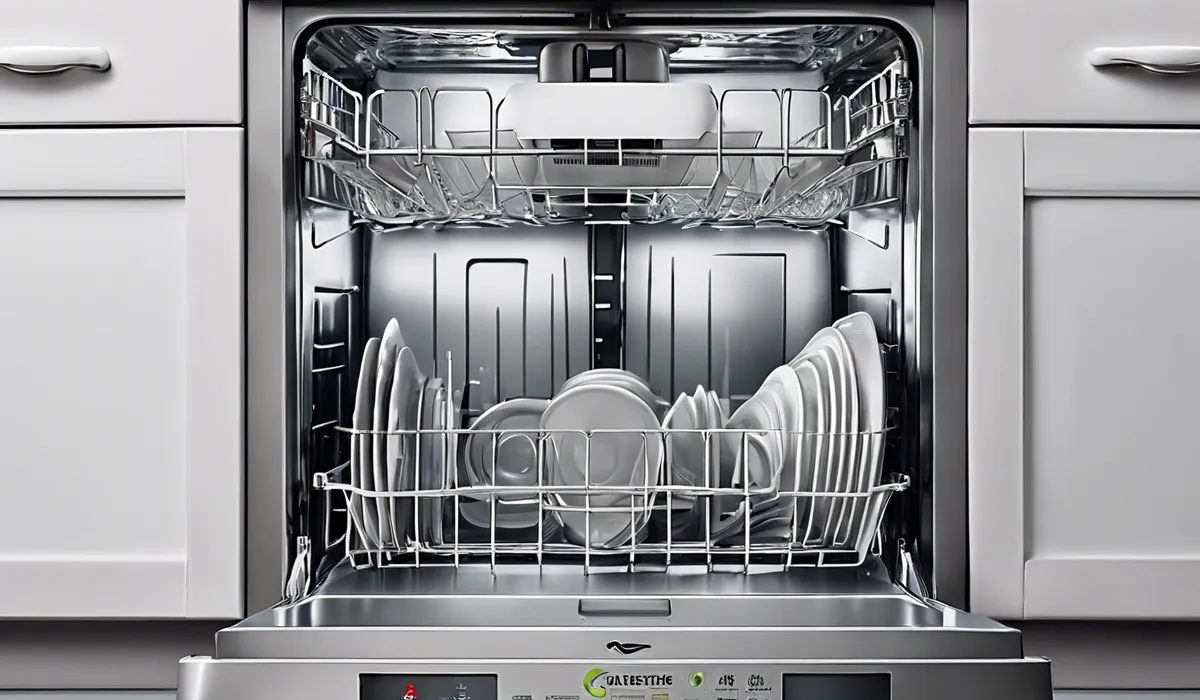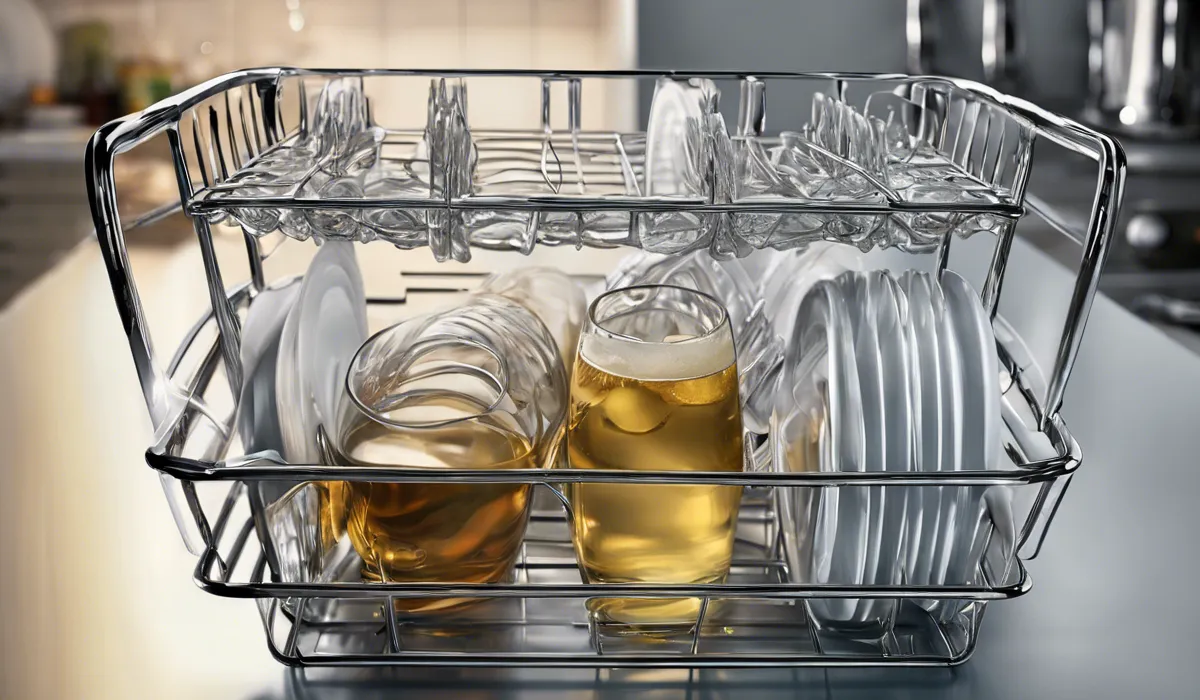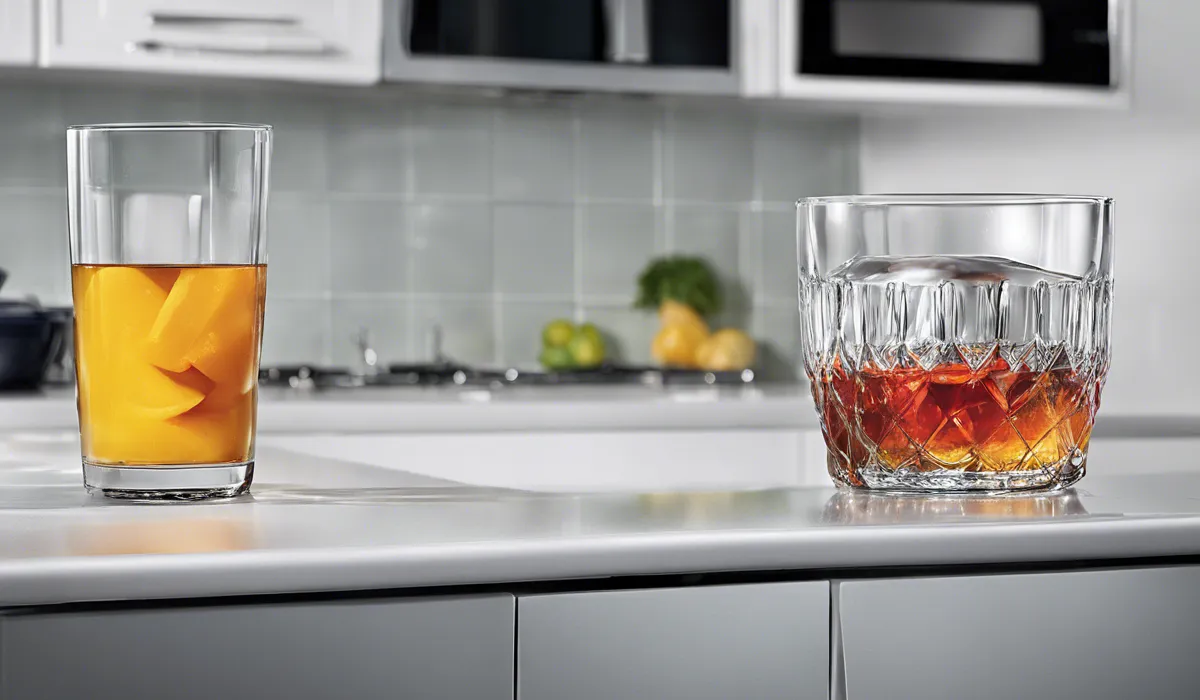Can Glass Go on Bottom of Dishwasher? The Safe Spot Guide
Glass items can often be placed on the bottom rack of a dishwasher, but it’s best to consult the manufacturer’s guidelines. Ensure that glassware is secure and not touching to prevent breakage during the wash cycle.
Understanding Dishwasher Safe Glass

What Makes Glass Dishwasher Safe
Glass becomes dishwasher safe when it can withstand the high temperatures and abrasive detergents typically used in a dishwasher cycle.
This resilience is often due to the manufacturing process and the materials used to make the glass.
Dishwasher safe glass is less likely to crack, chip, or break during the dishwasher cycle. Manufacturers achieve this durability by tempering the glass, a process that involves extreme heating and rapid cooling to strengthen the material.
Types of Glass and Dishwasher Safety
Not all glass is created equal when it comes to dishwasher safety. Borosilicate glass, for example, is known for its high thermal resistance, making it more likely to survive the heating elements of a dishwasher.
On the other hand, soda-lime glass is more common but less resistant to temperature changes, and thus more susceptible to damage.
There are also leaded crystal glasses, which should be avoided in dishwashers altogether due to their delicate nature and the risk of lead leaching.
Manufacturer Recommendations for Glassware
It is crucial to check the manufacturer’s recommendations before placing glassware in the dishwasher. Most manufacturers will label their glassware as dishwasher safe if it can endure the rigors of dishwasher use.
They might also provide specific instructions, such as using a gentle cycle or avoiding high heat drying, to prolong the life of the glassware.
Impact of Heat and Detergents on Glass Items
The combination of high heat and harsh detergents in a dishwasher can sometimes cause glass to become cloudy or etched over time.
This is often the result of a reaction between the detergents and the minerals in the glass.
Additionally, sudden temperature changes can lead to thermal shock, which may cause glass to crack or shatter. Therefore, understanding the limitations of your glass items is key to ensuring their longevity.
Loading Glassware in the Dishwasher

Best Practices for Loading Glassware
When loading glassware into the dishwasher, it is important to place each item securely to prevent movement during the cycle.
Glasses should not touch each other, as vibration can cause them to chip or crack. Invert cups and mugs to allow water to run off, and position wine glasses so that they are not knocked over by the spray arm.
Importance of Placing Glass on the Top Rack
The top rack of the dishwasher is designed for glassware and lighter items. It is farther from the heating element, which means glasses are exposed to gentler heat and lower risks of thermal shock.
Moreover, the top rack often has features to hold glassware in place, which minimizes the risk of damage during the wash.
Risks of Placing Glass on the Bottom Rack
On the bottom rack, glassware is closer to the heating element and the high-pressure spray arms. This increases the chances of breakage due to thermal stress and the impact of water jets.
Additionally, heavier items typically placed on the bottom rack could potentially shift and collide with the glass, causing cracks or chips.
Tips to Prevent Breakage and Damage
To avoid breakage, ensure that glassware is spaced well apart and not overloading the rack. Use a delicate cycle if available, and avoid high-temperature drying settings.
It’s also helpful to open the dishwasher immediately after the cycle to allow steam to escape and reduce the risk of heat damage.
Special Considerations for Dishwasher Use

When Glass Can Go on the Bottom Rack
Although it’s generally recommended to place glass on the top rack, there are exceptions.
Heavy-duty glass like thick baking dishes or certain types of tempered glassware can be placed on the bottom rack if they are labeled as dishwasher safe.
Make sure these items are secured and not at risk of being struck by rotating spray arms or other dishes.
Dishwasher Settings and Cycles for Glassware
Most dishwashers come with settings that are suitable for glassware, such as a “gentle” or “glass” cycle that uses cooler water and a softer spray.
Using a rinse aid can also help minimize spotting and streaking. It’s beneficial to select a cycle that includes an air-dry option to avoid the potential damage from heated drying.
Maintenance Tips for Ensuring Glass Safety
Regular maintenance of your dishwasher can help keep your glassware safe. Clean the spray arms and filters frequently to prevent clogging, which can lead to uneven water distribution and increased risks of damage.
Also, inspect the racks for any rough spots that might scratch or chip glass items.
Cleaning Non-Dishwasher Safe Glass Items
For delicate or non-dishwasher safe glass items, hand washing is the best option. Use warm, soapy water and a soft sponge to gently clean the items.
Rinse thoroughly to remove any soap residue, and dry with a lint-free cloth to avoid water spots. If you have hard water, consider using distilled water for rinsing to prevent mineral deposits on the glass.
FAQs About Placing Glass in the Dishwasher
Can all glass items be placed on the bottom rack of a dishwasher?
Not all glass items should be placed on the bottom rack; it’s essential to check the manufacturer’s guidelines for each item to determine the safest location.
Is it safe to put glassware on the bottom rack of my dishwasher?
Glassware can often be placed on the bottom rack, but it should be done cautiously to ensure items are secure and not touching to prevent breakage.
How can I prevent my glassware from breaking in the dishwasher?
Ensure that glassware is secure and spaced adequately to avoid contact with other items during the wash cycle to prevent breakage.
Should I consult my dishwasher’s manufacturer before placing glass on the bottom rack?
Yes, it’s best to consult your dishwasher’s manufacturer guidelines to know the recommended placement for glass items.
Are there special considerations for placing delicate glass items in the dishwasher?
Delicate glass items may require special care, such as a gentle cycle or top rack placement, to reduce the risk of damage.
Final Thoughts
While many glass items can be safely placed on the bottom rack of a dishwasher, it is crucial to adhere to the manufacturer’s guidelines for proper placement.
To avoid damage during the wash cycle, glassware should be securely positioned to prevent contact with other items, reducing the risk of breakage.





